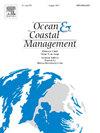研究中国渤海海洋保护区与渔业管理之间的差异和协同作用
IF 4.8
2区 环境科学与生态学
Q1 OCEANOGRAPHY
引用次数: 0
摘要
海洋保护区(MPA)和其他基于区域的养护措施与气候智能型渔业管理方法结合使用,对保护生态系统和鱼类种群健康非常重要。然而,由于立法程序、管理重点和管理机构的不同,空间管理方法通常与非空间管理干预措施分开实施。根据《昆明-蒙特利尔全球生物多样性框架》,全球海洋治理的空间性日益增强,因此必须研究海洋保护区作为一种更广泛的生态系统方法的效用,以补充传统的单一物种渔业管理。在本研究中,我们考察了中国渤海当前的政策和管理变革,并展示了海洋保护区治理与渔业管理之间的差异和协同作用。通过评估两者在目标设定、区域选择和管理条例方面的相互作用,我们揭示了实施渔业和空间保护措施的政府机构之间在协调和咨询方面存在的差距。特别是,在制定保护区目标和法规时,渔业管理目标含糊不清或缺乏考虑,反之亦然。此外,海洋保护区的既定目标与其对物种分布范围的地理覆盖不匹配,表明在保护规划中没有充分纳入渔业专业知识。为了加强渔业和保护当局之间的合作,我们确定了协同管理目标和基于生态系统方法的机会和行动,改进空间限制的设计,更好地整合空间管理干预措施,将其作为重要的渔业和基于生态系统的管理方法。要实现这些拟议的变革,就必须创建让所有专业知识和参与者参与其中的程序,加强多尺度和不同部门之间的合作。这些发现为弥合渔业管理与海洋保护区之间的差距提供了切实可行的见解,并可为渤海和其他地区综合管理的进一步决策提供参考。本文章由计算机程序翻译,如有差异,请以英文原文为准。
Examining the discrepancy and synergy between marine protected areas and fisheries management in the Bohai Sea, China
Marine protected areas (MPAs) and other area-based conservation measures used in conjunction with climate-smart fisheries management approaches are important for safeguarding ecosystem and fish population health. However, spatial management approaches are often implemented separately from non-spatial management interventions due to their distinct legislative processes, management priorities, and administrating agencies. As global ocean governance becomes increasingly spatial in compliance with the Kunming-Montreal Global Biodiversity Framework, it is imperative to examine the utility of MPAs as a wider ecosystem approach to complement traditional, single species fisheries management. In this study, we examine current policy and management transformations happening in the Bohai Sea in China and demonstrate the discrepancies and synergies between MPA governance and fisheries management. By evaluating their interactions in objective setting, area selection, and management regulations, we reveal the gaps in coordination and consultancy between the government agencies implementing fisheries and spatial conservation measures. In particular, there is ambiguity or lack of consideration of fisheries management objectives in the framing of conservation area objectives and regulations, and vice versa. In addition, the mismatch between stated objectives of MPAs and their geographic coverage of species distribution ranges suggests insufficient incorporation of fishery expertise in conservation planning. To strengthen the cooperation between fisheries and conservation authorities, we identify opportunities and actions for synergizing management goals and ecosystem-based approaches, improving the design of spatial restrictions, and better integrating spatial management interventions as a critical fisheries and ecosystem-based management approach. These proposed changes will necessitate the creation of processes for engaging the full spectrum of expertise and actors, enhancing collaborations at multiple scales and between different sectors. These findings offer practical insights into bridging the gap between fisheries management and MPAs and could inform further decisions on integrated management in the Bohai Sea and elsewhere.
求助全文
通过发布文献求助,成功后即可免费获取论文全文。
去求助
来源期刊

Ocean & Coastal Management
环境科学-海洋学
CiteScore
8.50
自引率
15.20%
发文量
321
审稿时长
60 days
期刊介绍:
Ocean & Coastal Management is the leading international journal dedicated to the study of all aspects of ocean and coastal management from the global to local levels.
We publish rigorously peer-reviewed manuscripts from all disciplines, and inter-/trans-disciplinary and co-designed research, but all submissions must make clear the relevance to management and/or governance issues relevant to the sustainable development and conservation of oceans and coasts.
Comparative studies (from sub-national to trans-national cases, and other management / policy arenas) are encouraged, as are studies that critically assess current management practices and governance approaches. Submissions involving robust analysis, development of theory, and improvement of management practice are especially welcome.
 求助内容:
求助内容: 应助结果提醒方式:
应助结果提醒方式:


